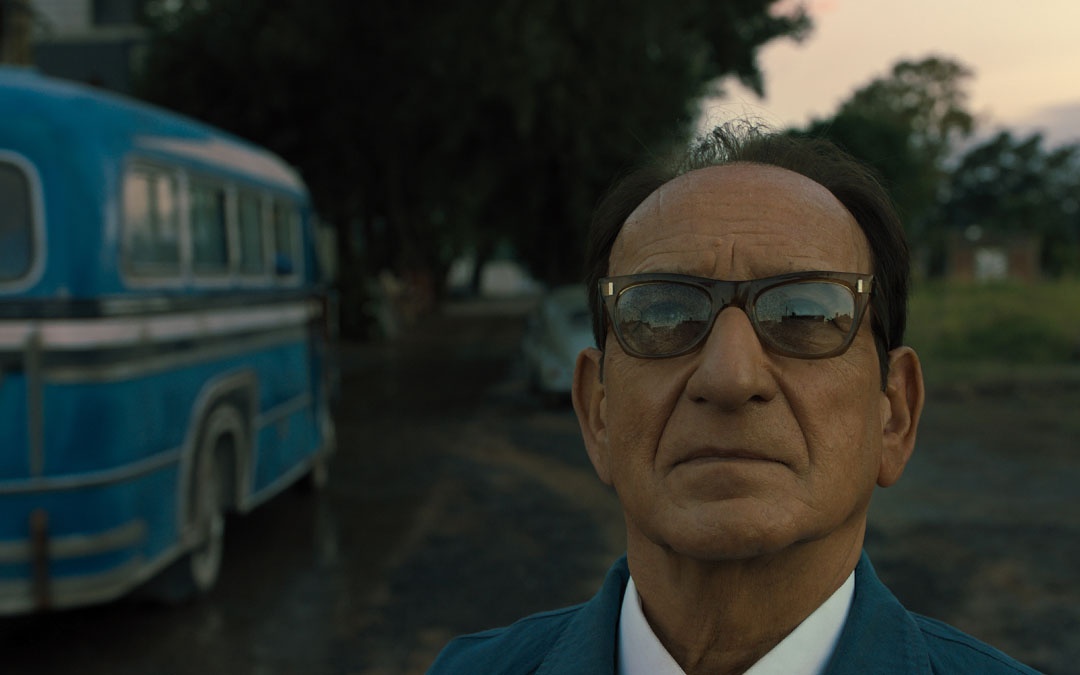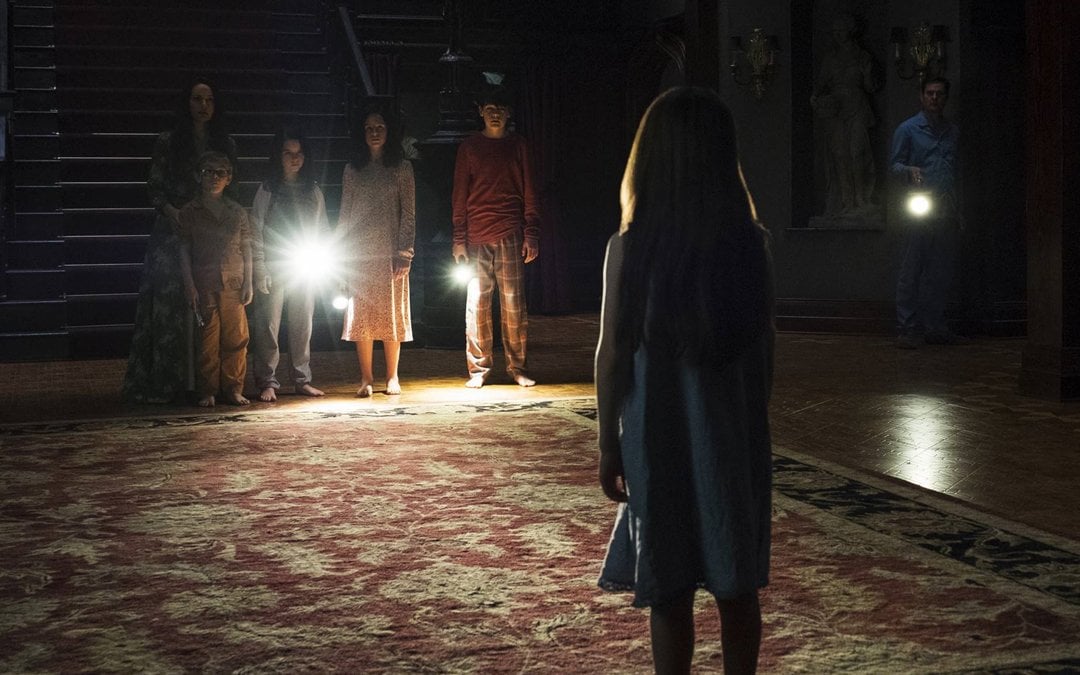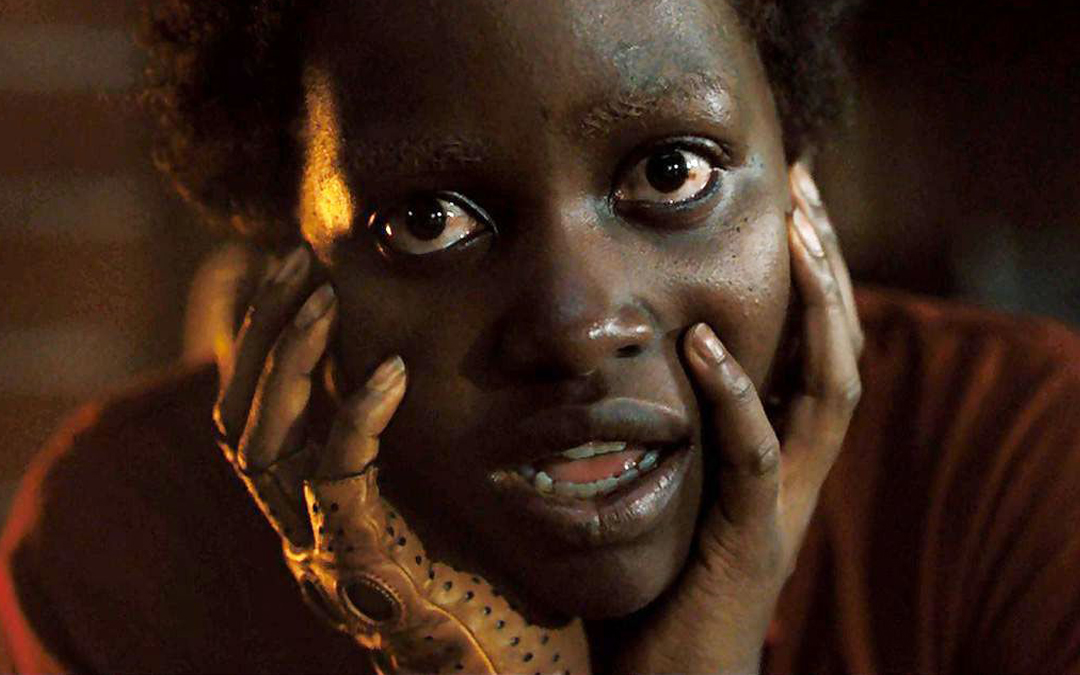All The Write Moves: The Terror: Infamy
September 16, 2019
Juxtaposing one of the darkest chapters in American history with traditional Japanese mythology, AMC’s limited series The Terror: Infamy offers a fresh take on small screen horror. Evocative, mysterious and unnerving, the show features customary elements such as gore and shocking violence, but it also integrates such concepts as faith, national identity, and spiritualism to create a unique mood. Better still, by rooting its storyline in the experience of Japanese-American citizens who were interred in prison camps during World War II, the show has an educational component layered beneath spooky entertainment.
The Terror: Infamy is the second cycle of an anthology series that began last year with The Terror, which was adapted from Dan Simmons’ novel about a doomed 19th century naval expedition through the Arctic Circle. The new cycle, developed by Alexander Woo and Max Borenstein, retains merely the title from its predecessor.
Viewing Infamy as a stand-alone project reveals screenwriting tools that Woo, Borenstein and their writing staff have employed to infuse Infamy with equal measures of intrigue, sociopolitical relevance, and suspense.
Building a backdrop
Soon after the Japanese military attacked Pearl Harbor on Dec. 7, 1941, forces within the U.S. government successfully lobbied for the removal of Japanese-born and Japanese-descended citizens from their homes. Stripped of their rights, their property, and their dignity, these Americans were imprisoned within so-called “relocation camps,” based upon the spurious assumption that their loyalty belonged to the Japanese empire. Perhaps the most tragic aspect of this historical episode is that America didn’t learn its lesson because the current practice of imprisoning prospective new citizens at the southern border has echoes of what happened to Japanese-Americans in the 1940s.
Infamy takes its time setting the stage for a dramatization of the relocation process, because the first episode takes place primarily in southern California, where college-aged Chester Nakayama (Derek Mio) lives with his family. Under the guidance of stubborn patriarch Henry (Shingo Usami), a fisherman, the family struggles to maintain a middle-class existence even before Pearl Harbor. Written by Borenstein and Woo, the first episode introduces two important pressure points. First is the tension between Henry, who wants to assimilate into the world beyond his hometown. Second is the possible presence of an evil spirit, which may or may not be the reason why one of the Nakayama’s neighbors commits suicide (quite gruesomely) during the first episode.
The patience with which Borenstein and Woo lay this narrative and thematic groundwork demonstrates an advantage that creators of TV horror have over their counterparts in the feature world. Made-for-TV scary stories can spend time establishing character and mood before the nasty stuff gets started, whereas features are under constant time pressure to deliver jolts quickly and steadily.
The gradual approach reaps major rewards throughout Infamy because everything that happens in the series is influenced by those two pressure points from the first episode. Chester’s crisis of cultural identity, for instance, has a measurable impact on his ability to accept the possibility of evil spirits bedeviling his family. Moreover, by spending an entire episode establishing the interwoven fabric of a small Japanese-American community, Borenstein and Woo ensure that everything about Infamy feels specific to this particular set of characters.
Takeaway: To make a scary story feel specific, take time creating context.
It follows
Most mainstream horror stories come equipped with what might be called a safety valve; a narrative mechanism that allows viewers to compartmentalize the upsetting things they see on-screen. For haunted house movies, the safety valve is the house itself, because viewers believe that if victims can escape the house, they will be free of danger. For serial killer movies, the safety valve is the notion that danger ends once the killer is incarcerated or destroyed.
Truly frightening horror stories operate without safety valves, suggesting that the menace featured in the story can be anywhere and that eliminating the menace is nearly impossible. Infamy falls into this category. The monster permeating this story is an obake, a type of malicious ghost, which may or may not be after Chester, his family, the larger Japanese-American community to which the Nakayama family belongs, or even something more. Personified as Yuko Tanabe (played by Kiki Sukezane), the obake has a nasty habit of possessing people and thereafter forcing the people to kill themselves or others.
Early in the series, Chester determines that he is the obake’s chosen victim, so he surprises his family by enlisting in the U.S. Army — the very branch of the military that incarcerated his family — as a translator. He reasons that doing so will get him sent overseas, hopefully taking the obake with him. If the monster takes his life, he believes, that’s a small price for keeping his family safe. Unfortunately for Chester, the obake can be in two places at once.
When constructing horror stories, you, as the writer, have a choice. Do you want your story to be safe, something that viewers can watch from a distance? Or do you want your story to be dangerous, something that pulls viewers in by breaking rules and generating a palpable sense of doom? Borenstein and Woo chose the latter option, once again reaping strong benefits for their show. Since it is hard to grasp the scope of the obake’s reach, it is therefore also hard to imagine how Chester and his family might vanquish the monster. And the idea that there might not be a happy ending at all? That’s the scariest path of all to travel when telling horror stories.
Takeaway: The more powerful the menace in a horror story, the more effectively the story can get under viewers’ skin.
Endangered by choice
Adding to the drama of Infamy is the presence of Luz Ojeda (played by Cristina Rodlo), Chester’s Mexican-American girlfriend. When the story begins, Chester secures illicit medicine to help Luz terminate a pregnancy because Chester and Luz don’t feel ready, as college students, to become parents. To Chester’s surprise, she doesn’t go through with the procedure, demonstrating her determination upon choosing a course of action.
Yet it is Luz’s second big choice that has the greatest impact on Infamy. After Chester’s family receives government orders to prepare for relocation, Chester leaves his relatives to help Luz find safety (Luz’s own family disowns her because of the pregnancy). The process of sending Luz somewhere safe becomes complicated once the couple realizes that upon birth, their baby will be transferred to a relocation center because the baby is half Japanese. Circumstances turn again when a snitch reveals Chester’s location, triggering his arrest. Demonstrating her determination once again, Luz insists on staying with Chester, essentially volunteering to live in a relocation camp.
While noble and romantic, the gesture is much riskier than Luz imagines because at the time she is unaware that an obake might be haunting Chester.
In addition to upping the story’s emotional stakes, Luz’s sacrifice supercharges Infamy’s sociopolitical aspects. Her Latina identity alludes to America’s current kids-in-cages nightmare, and the way she represents multiculturalism — a woman from one foreign culture carrying a baby fathered by a man from another foreign culture — speaks to the fear of the “other” that rattled America in the 1940s just as it now rattles some Americans in the 2010s. It is not coincidental that Borenstein and Woo present Luz as one of the show’s bravest characters, because nothing puts immorality into perspective quite like an example of selfless morality.
In this way, among many others, Borenstein, Woo and their writers ensure that The Terror: Infamy isn’t just a supernatural riff on a grim episode from history. Even as the show beguiles and scares, it reminds viewers how America rises when it overcomes its worst instincts and embraces its best ones, even if the people leading us into the light have family ties from beyond our shores.
Takeaway: Stories from the past, even those with fictional elements, can provide important lessons for the present.
Written by: Peter Hanson
Peter Hanson is a Los Angeles-based writer, filmmaker and teacher. He directed the screenwriting documentary Tales from the Script, and he teaches at Pepperdine University and UCLA Extension. He provides script consulting at www.GrandRiverFilms.com.- Topics:
- Discussing TV & Film




